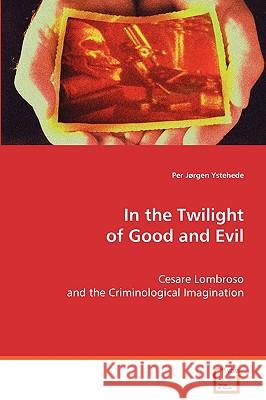In the Twilight of Good and Evil » książka
In the Twilight of Good and Evil
ISBN-13: 9783639071283 / Angielski / Miękka / 2008 / 164 str.
The 18th and the 19th century saw both the rise of the sciences on crime and the rise of gothic literature. In this book Per Jorgen Ystehede examines the relationship between the work of Cesare Lombroso (1835-1909) and the rise of the gothic imagination. Furthermore, addresses the question of how to understand the relationship between the gothic tradition and contemporary critical criminological perspectives, as mediated through the discussion of Lombroso's thought and its influence on the discipline of criminology. Through a reading of Cesare Lombroso's The Anarchists (Gli Anarchici), Ystehede discusses Lombroso's views on the born criminal, on revolution, anarchism, political revolutionaries and the criminal through passion. This study offers both a new interpreataion of Lombroso's work on anarchism, as well as provocative interpretations of fin-de-siecle spiritualist research in relation to the development of the science of criminology.
The 18th and the 19th century saw both the rise of the sciences on crime and the rise of gothic literature. In this book Per Jørgen Ystehede examines the relationship between the work of Cesare Lombroso (1835-1909) and the rise of the gothic imagination. Furthermore, addresses the question of how to understand the relationship between the gothic tradition and contemporary critical criminological perspectives, as mediated through the discussion of Lombrosos thought and its influence on the discipline of criminology. Through a reading of Cesare Lombrosos The Anarchists (Gli Anarchici), Ystehede discusses Lombrosos views on the born criminal, on revolution, anarchism, political revolutionaries and the criminal through passion. This study offers both a new interpreataion of Lombrosos work on anarchism, as well as provocative interpretations of fin-de-siècle spiritualist research in relation to the development of the science of criminology.











